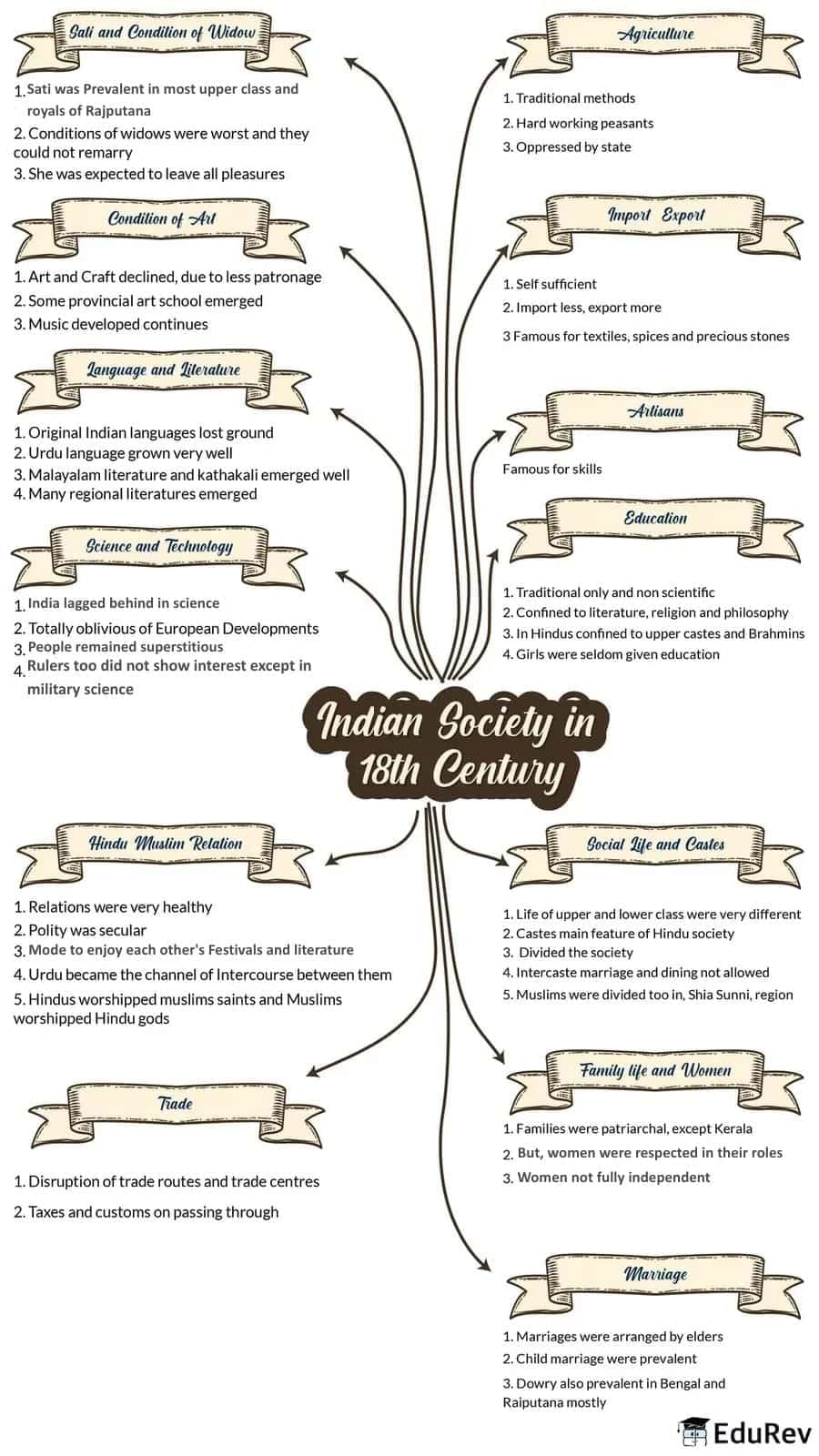UPSC Exam > UPSC Notes > History for UPSC CSE > Mind Map: Indian Society in 18th Century
Mind Map: Indian Society in 18th Century | History for UPSC CSE PDF Download

The document Mind Map: Indian Society in 18th Century | History for UPSC CSE is a part of the UPSC Course History for UPSC CSE.
All you need of UPSC at this link: UPSC
|
210 videos|855 docs|219 tests
|
FAQs on Mind Map: Indian Society in 18th Century - History for UPSC CSE
| 1. What were the major social classes in 18th century Indian society? |  |
Ans. In the 18th century, Indian society was primarily divided into several social classes, including the aristocracy (nobles and landlords), the priestly class (Brahmins), the merchant class (Vaishyas), and the laboring class (Shudras). This hierarchical structure was influenced by the caste system, which played a significant role in social organization and interactions during this period.
| 2. How did colonialism impact Indian society in the 18th century? |  |
Ans. The advent of colonialism in the 18th century brought significant changes to Indian society. The British East India Company's expansion led to the disruption of traditional power structures and economic systems. Colonial policies affected agriculture, trade, and local industries, causing social upheaval and contributing to the gradual transformation of Indian society, including the rise of new social classes.
| 3. What were the prevalent cultural practices in 18th century India? |  |
Ans. Cultural practices in 18th century India were diverse, influenced by regional traditions and religious beliefs. Art, music, and dance flourished, with forms like classical music and folk dances being popular. Festivals played a crucial role in social cohesion, and literature, particularly in regional languages, saw significant growth, reflecting the rich cultural tapestry of the time.
| 4. How did religion shape Indian society in the 18th century? |  |
Ans. Religion was a central aspect of life in 18th century India, influencing social norms, practices, and community identities. Major religions, including Hinduism, Islam, and Sikhism, coexisted, often leading to both harmonious interactions and communal tensions. Religious leaders played influential roles in society, and religious festivals and rituals were integral to cultural life.
| 5. What were the gender roles in 18th century Indian society? |  |
Ans. Gender roles in 18th century Indian society were largely defined by patriarchal norms, with men typically holding positions of authority in both public and private spheres. Women were primarily responsible for household duties and child-rearing, with limited access to education and rights. However, some women of higher social classes did participate in cultural and social activities, challenging traditional norms to some extent.
Related Searches

















